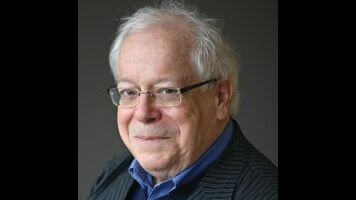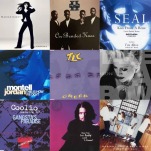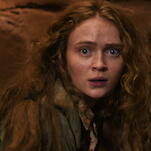How To Watch A Movie admits its pointlessness for aspiring film buffs

We are not in a golden age of film critics looking back on their long careers and summing up what they’ve learned. Just a few months after Richard Schickel shrugged out Keepers, here is David Thomson’s How To Watch A Movie, another slapdash look at cinema that feels rushed out at the first-draft stage. Both Schickel and Thomson are respected critics (Schickel was with Time for many years, Thomson The New Republic), but in neither case do the years of experience amount to a hill of beans.
Where Keepers was a broad overview of cinema history, How To Watch examines different elements of the form, allegedly with the intent of illuminating how to draw insight beyond a film’s story. It utterly fails at this task, with Thomson offering abstract philosophizing instead of practical analysis. There’s a chapter defining frames, for example, but basically no discussion of framing. Other fundamentals of visual analysis—lenses, lighting, color—are similarly downplayed, if not omitted entirely. As these are basically the first things a viewer should look at when digging into a film, their exclusion is mystifying.
While the title suggests something introductory, even film buffs may have trouble following Thomson’s points, with his case studies seemingly chosen for obscurity rather than appropriateness. He discusses cuts (that is, the splicing together of two shots) in the context of Jacques Demy’s Bay Of Angels, a film that’s scarcely even notable for its editing. There’s no mention of an illustrative example like 2001’s flash-forward, for example, or even an examination of a film viewers are likely to have seen. Beginners will be totally adrift, while those well versed enough to know who Demy is probably don’t need a refresher on what a cut is. (To learn about specific filmmaking choices, readers could do much worse than to scroll through the archives of Scenic Routes or Internet Film School.)
It’s difficult to fathom an appropriate audience for this, and even admirers of Thomson’s criticism may find the book hard to stomach. A section on plot begins, “‘Tell me a story,’ we beg as children, while wanting so many other things. Story will put off sleep (or extinction), and the child’s organism hardly trusts the habit of waking yet.” There’s then a brief discussion of All Is Lost and an unconvincing argument that only certain narrative outcomes were possible with Robert Redford as the star. Thomson moves onto a list of films that are more about mood than incident, but it’s just trivia; there’s no suggestion of how audiences might approach these titles, how the directors accomplished the moods, or what they were hoping to achieve with them. The chapter ends with a bit on how hard it is for TV shows to pull off series finales and an anecdote about why Thomson stopped watching Homeland. Pointless blather, in other words.








































